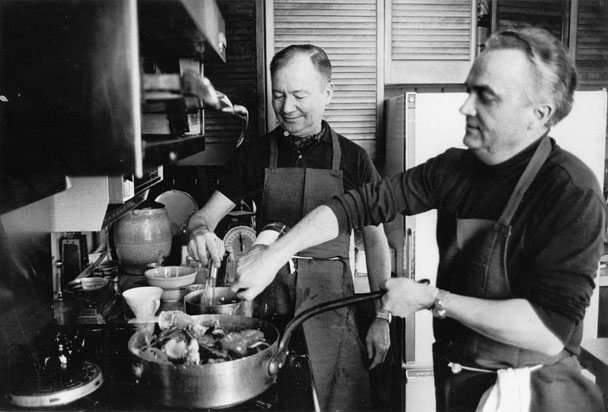Twenty years ago one of the world’s seldom disputed authorities on tea commented gravely that the Boston Tea Party had given Americans a prenatal disinclination for drinking the stuff. It would seem that he was short-circuited in his thinking, somewhere between orange pekoe and pekoe perhaps, for last year alone some 104 million pounds of tea were imported into the United States, converted into the equivalent of 20 billion cups of liquid ranging in shade from pale amber to oxblood, and drunk by the populace from Bangor to Berkeley, from the Canadian border south to Key West.
Tea, for all its present popularity, is a relative newcomer to the roster of beverages consumed in this hemisphere, and is one of the few universally consumed items in the world to which neither reference nor allusion is made in Shakespeare or the Bible.
Nobody, it seems, is dead certain as to the original home of tea. Some say China, because certain varieties or species which grow there are distinctive and wholly unlike plants found growing elsewhere. Others, with equally convincing facts at their disposal, say India. Most authorities, however, are agreed that the use of tea leaves in making the world’s second-ranking non-alcoholic beverage, did originate with the Chinese, and that the cultivation of the tea plant for its leaves has been carried on in China for more than a thousand years.
One legend concerning the plant’s origin says that a Buddhist saint named Bodhidharma, commonly known as Daruma, had vowed to stay awake for seven years contemplating Buddha, and that at the end of the fifth year he was almost overcome with a feeling of drowsiness. In desperation, to prevent his eyelids from closing, he ripped them off and threw them to the ground. The local climate being what it was that year, they took root and grew up as tea plants.
Somewhat less bizarre (and decidedly more palatable) is a version of the same legend, which derives from India and alleges that Daruma, or Bodhidharma if you prefer, in distress at the fifth year of constant wakefulness, debarrassed a nearby bush of its leaves and chewed them. Happily it turned out that these were the leaves of a tea plant, which provided sufficient fortification to enable him to maintain his vigil for the remaining two years.
These events, apocryphal perhaps in one or two details, supposedly transpired more than 2,500 years before Christ. The first known reference to tea, however, was made by a Chinese lexicographer in 350 A.D. and the first book to appear on the subject was a treatise entitled Ch’a Ching, meaning Tea Scripture, which appeared in 780 A.D., the work of a Chinese comedian named Lu Yu.
The tea plant is an evergreen hailing from the same family as the camellia, and becomes in its maturity either a tree or bush depending on whether or not, or how often, it has been pruned. Given free rein in their growth, tea plants have been known to achieve a height in excess of thirty feet. It is said that in China tea bushes are kept down to a maximum height of three feet so that the economy-sized Chinaman can work to the best advantage. Though the leaves are generally plucked today by hand or by machine, a Buddhist legend has it that monkeys were first employed for the work. The story goes that the Chinese would chase a monkey to the very top of a tea tree where the shoots grow sweetest and the leaves most tender and throw stones at him. The simian, thus angered, would unwittingly go along with the gag by firing tea-branch broadsides at his tormentors, much to the latters’ delight.
The plant, first classified Thea sinensis in 1753 by the Swedish botanist Linnaeus, begins as a brown seed, bears a white blossom with a yellow center, and grows under practically any circumstances, other than severe drought, at any altitude—the higher the better—up to seven thousand feet. (Several hundreds were brought to the United States a few decades ago and planted in North Carolina. Though the climate was favorable and the plants thrived, labor costs proved to be prohibitive, so the native leaf was never marketed.)
More than three thousand leaf shoots are required to prepare one pound of the dried, marketable product and one bush may yield as much as one-fourth of a pound of leaf during a single season. A bush is at the peak of its yield when it reaches its tenth year, although it continues to bear quality leaves at the ripe old age of one hundred. Leaves on the bush are dark green in color and from one to twelve inches in length.



 Pinterest
Pinterest






